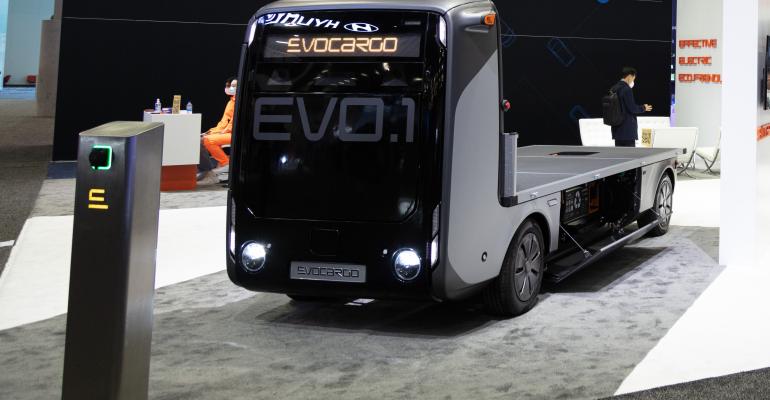Last month’s Consumer Electronics Show provided a glimpse into the state of the autonomous-vehicle industry. Most of the major players were there, while startups such as tuSimple and Luminar also were making an impression.
Here are five thoughts on what the AV industry has in store for 2022 and beyond:
AV Companies Are Getting Real
As recently as a year ago, AV companies were still exploiting the “wow” factor of a vehicle that drove itself. That is no longer enough. CES 2022 saw the debut of serious economic arguments for AVs in specific use cases. Today, an AV must make business sense in real time and the payback must be clear. In logistics, for example, an AV company has to show it can quickly deploy a commercial solution, and what the solution will mean in terms of dollars within a reasonable period of time. You need to be up and running in weeks, not months. Buyers also are increasingly interested in a service-based business model – where a logistics company can pay a fee to use an AV rather than purchase the AV outright.
Solid-State Lidar Is Coming
Many AVs use lidar, which enables an AV to determine ranges, i.e., variable distance. It does this by targeting an object with a laser and then measuring the amount of time it takes for the reflected light to return to the lidar receiver. Lidar is a “must-have” capability for an AV, but it has traditionally been costly and difficult to implement, with its many component parts being a drain on batteries. Solid-state lidar offers a way to get lidar on an AV with far greater simplicity in deployment and better energy characteristics. Lower-cost solid-state lidar is coming very soon, and this will enhance the viability of AVs in many industrial use cases.
Government Is Getting More Involved
Transportation Secretary Pete Buttigieg, addressing CES remotely, said he considers AVs part of “the high-stakes race to dramatically reduce transportation’s impact on our climate before it’s too late.” According to Buttigieg, the new infrastructure law presents an opportunity for the government to support AV transportation through safety improvements. As he put it, “Government didn’t invent the plane, the train or the automobile, but government did build airports, lay tracks and construct highways.” Like most entrepreneurs, I am a little leery of excessive government involvement in my industry, but I do think the government can play a useful role in getting a new technology adopted safely and uniformly across the society.
Stay Tuned for More Fully Autonomous Vehicles
AV market growth faces an obstacle with existing wireless infrastructure. Connected AVs require ultra-low-latency connections to nearby 5G antennas and edge compute capabilities. This is not working out very well in certain places. One solution is to offer an AV that does not need to “ask” nearby (or not-so-nearby) compute resources for any help in operation. This is easier said than done, as it requires the AV to have more on-board computing and software than the maker might want to deal with. But if the alternative is not to deploy, or create any kind of safety risk, the choice is clear. AV makers are responding to this need.
 The Majors May Not Always Be in the (Unoccupied) Driver’s Seat
The Majors May Not Always Be in the (Unoccupied) Driver’s Seat
One of the treats of CES is to see the major OEMs such as Stellantis and Hyundai showcase their futuristic concepts. They were at CES 2022, of course, but it was interesting to see how, in my view, they are not necessarily in the lead right now. Yes, it’s probably inevitable that the big automakers eventually will dominate the AV space, but for now, I think they’re following, not leading because the AV market will be validated by small, profitable industrial examples. Mass-market adoption will follow.
Time will tell if I am right. In any event, the AV industry is a very exciting place to be right now. I have a feeling that when we check in next year, at CES 2023, some of the trends I am predicting now will be old news – but there will be many incredible new trends to discover just the same.
Andrey Bolshakov (pictured, above left) is founder and chief business development officer of Evocargo, a vertically integrated logistics service based on unmanned electric platforms.





